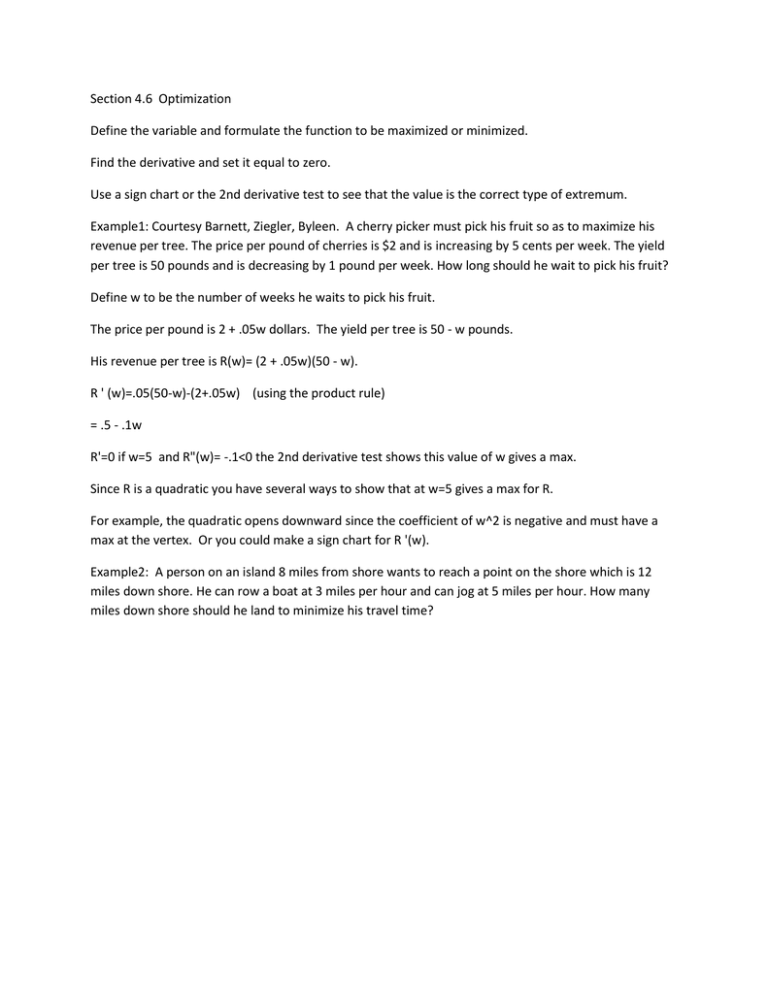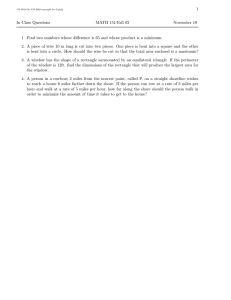Section 4.6 Optimization
advertisement

Section 4.6 Optimization Define the variable and formulate the function to be maximized or minimized. Find the derivative and set it equal to zero. Use a sign chart or the 2nd derivative test to see that the value is the correct type of extremum. Example1: Courtesy Barnett, Ziegler, Byleen. A cherry picker must pick his fruit so as to maximize his revenue per tree. The price per pound of cherries is $2 and is increasing by 5 cents per week. The yield per tree is 50 pounds and is decreasing by 1 pound per week. How long should he wait to pick his fruit? Define w to be the number of weeks he waits to pick his fruit. The price per pound is 2 + .05w dollars. The yield per tree is 50 - w pounds. His revenue per tree is R(w)= (2 + .05w)(50 - w). R ' (w)=.05(50-w)-(2+.05w) (using the product rule) = .5 - .1w R'=0 if w=5 and R"(w)= -.1<0 the 2nd derivative test shows this value of w gives a max. Since R is a quadratic you have several ways to show that at w=5 gives a max for R. For example, the quadratic opens downward since the coefficient of w^2 is negative and must have a max at the vertex. Or you could make a sign chart for R '(w). Example2: A person on an island 8 miles from shore wants to reach a point on the shore which is 12 miles down shore. He can row a boat at 3 miles per hour and can jog at 5 miles per hour. How many miles down shore should he land to minimize his travel time?





